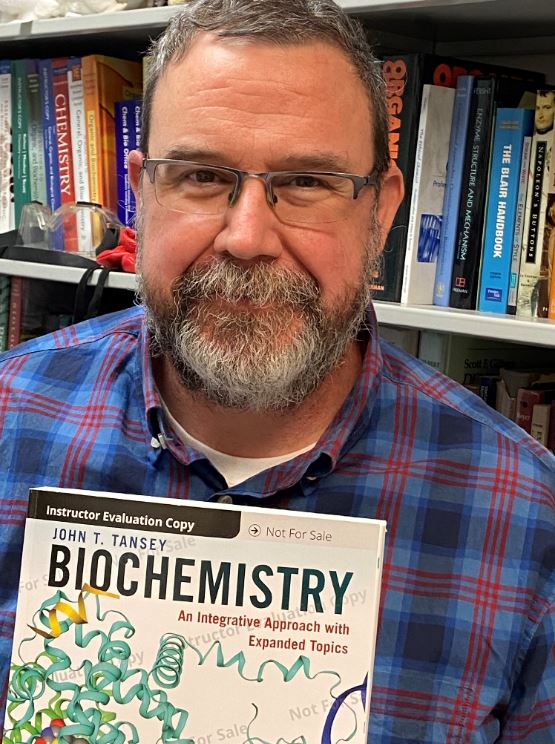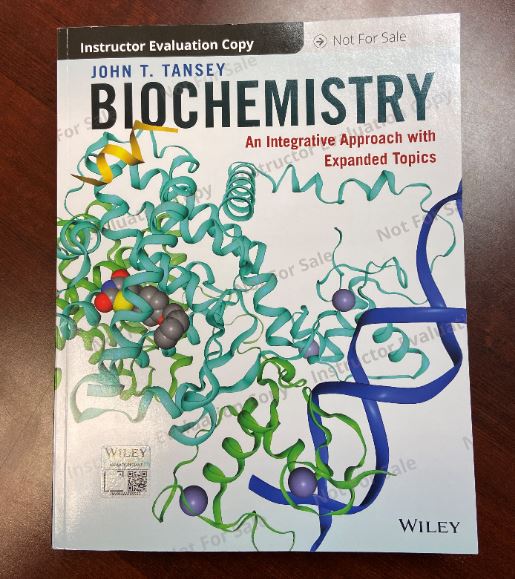Otterbein Professor Rewrites the Book on Biochemistry
Posted Mar 15, 2021
It was a journey of 10 years from idea conception to publication, but the new biochemistry textbook from Otterbein Professor of Chemistry John Tansey will soon be in the hands of students across the country. His textbook, Biochemistry: An Integrative Approach and Expanded Topics, will be published later this year.
Rewriting and updating biochemistry textbooks has been a passion project for Tansey, who felt that currently available textbooks weren’t meeting the needs of today’s students.

“Most chemistry and biochemistry textbooks were published in the 1970s and 80s, with just updates and add-ons,” he said. “The bones were there but I wanted to expand on that and make it more interconnected.”
Older textbooks, he explains, focus more on the classical approach to learning chemistry. They present all the different molecules like sugars and fats, then explain how they are metabolized in the body. Tansey saw how that created a major disconnect for students.
He offered this cinematic example for the less science savvy: “Think about your favorite movie series, like The Avengers. If you had to first memorize the vast number of characters and their own individual backstories, then try to apply them to the plot of one culminating movie, it would be virtually impossible. You can’t keep it all straight without context.”
To provide that context, his textbook has several unique features compared to other biochemistry texts. First, it uses worked problems embedded in the text, similar to what is seen in introductory chemistry and physics books. Second, descriptive biochemistry is integrated with metabolic biochemistry, rather than presented separately as in other textbooks, lending relevance to the material. This format also helps students who can only take a single semester of biochemistry. In addition to the text, online resources include videos of Tansey solving worked problems from the text, electronic homework, and Dynamic Figures, an interactive, web-based tool for exploring biological molecules, processes, pathways, and mechanisms.
Since 2002, Tansey has become familiar with Otterbein students and how their learning styles have evolved over time. He credits the unique relationships Otterbein professors have with students as being a major influence on creating this textbook.

As director of the inter-departmental Biochemistry and Molecular Biology Program, Tansey also has been able to experiment with new ways of teaching and creating variety in his courses, making sure the students take away all they can from his instruction.
Tansey took everything he had learned and applied it to this textbook project. Originally, he had enough to fill two volumes, but worked hard to pare it down to only one.
Otterbein students and faculty have received the book positively, with students saying they enjoy the conversational tone of the writing, clear diagrams, and current examples.
“Many students who enroll in biochemistry are pre-med or have biomedical interests, so I’ve tried to use many biomedical examples. I hope this helps them think differently about biochemistry and science in general and helps them think more deeply than they had previously,” Tansey said.
Throughout the writing and editing process, he credits Otterbein with giving him the ability to learn along the way about teaching, students, and how the two interact.
“Otterbein is a university that values teaching, first and foremost. I’ve learned a lot from my students and colleagues. This book is a credit to them as well. They proved to be the best ‘co-authors’ I could have hoped for,” he said.